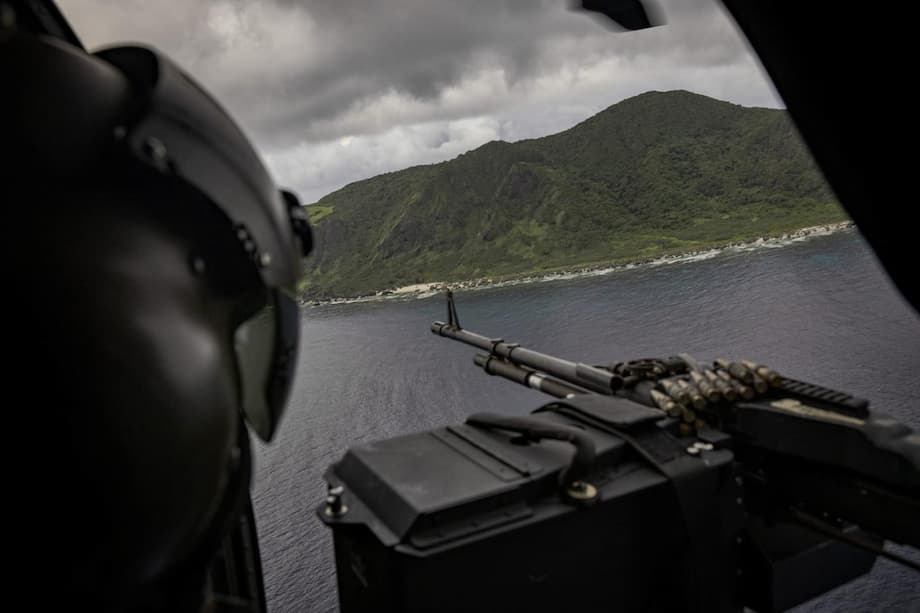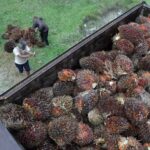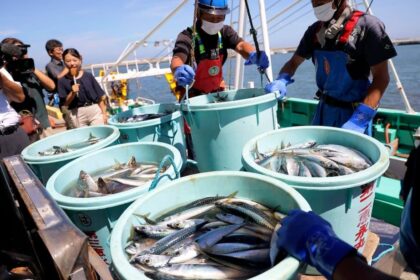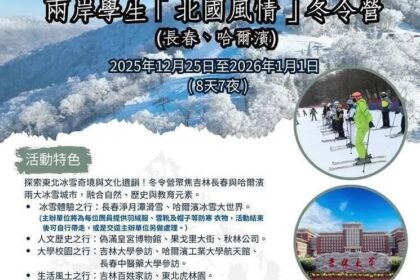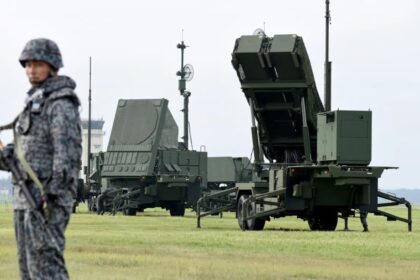A frontline outpost in the Bashi Channel
From the highest rise on Mavulis Island the horizon is a sweep of turquoise water, yet the giant Philippine flag snapping in the wind makes a point that the landscape does not. This is a military outpost, not a holiday isle. Mavulis is the northernmost point of the Philippines, an uninhabited wedge of rock and grass that straddles the Bashi Channel between Batanes province and Taiwan. It overlooks a maritime doorway that links the South China Sea to the wider Pacific. In any crisis over Taiwan, that doorway could decide how quickly ships, aircraft, and information flow, and who gets to use the waterway.
- A frontline outpost in the Bashi Channel
- Why this narrow waterway matters
- Mavulis today, small garrison with big duties
- Manila’s calculus, treaty ties and a shifting defense posture
- The evacuation challenge if conflict erupts
- Balancing One China policy with practical cooperation
- China’s moves and responses in the Luzon Strait
- What an allied response could look like
- Risks of miscalculation and the human factor
- At a Glance
Mavulis sits about 142 kilometers from Taiwan’s southern tip. The island is far from Manila and hard to reach, usually by an overnight boat ride from Basco or a short helicopter hop when weather allows. The Philippine military began a rotating presence on this isolated island in the last decade as tensions with China grew. Troops on Mavulis serve as first responders in the Luzon Strait, confirm what is moving through the channel, and assert the country’s sovereignty. They also keep an eye out for foreign poachers. Encounters with Chinese vessels are uncommon here, but the calm can be deceptive. President Ferdinand Marcos Jr has said it is difficult to imagine a Taiwan conflict that leaves the Philippines untouched, given geography and the large Filipino community on the island. Under a long-standing treaty with the United States, and with expanded American access to bases in northern Luzon, the outpost on Mavulis is now threaded into larger plans for a crisis in the Taiwan Strait.
Why this narrow waterway matters
The Bashi Channel is one of the few deep passages in the first island chain, the arc of land that runs from Japan through Taiwan and the Philippines to Borneo. It is a route used by commercial ships and navies alike. Submarines and surface groups pass here to move between the South China Sea and the western Pacific. That traffic makes the channel a strategic prize. In a war over Taiwan, a blockade of this waterway could hinder resupply to the island and slow allied responses.
The chokepoint in a Taiwan crisis
Beijing views control of the waters north and south of Taiwan as a way to isolate the island and complicate any outside intervention. If China tried to close the Bashi Channel or to declare exclusion zones, it would place heavy pressure on the lines of communication that Taiwan and its partners rely on. It would also raise the stakes for the Philippines, whose archipelago frames the southern entrance to the channel. Manila’s coastal radar, island outposts, and airfields in northern Luzon would be pivotal in watching the corridor and, if necessary, helping others to keep it open.
A difficult place to control
Nature adds complexity to strategy here. The Luzon Strait is known for rough seas, strong currents, and frequent weather systems. The islands of Batanes and the waters around them are scattered and remote. That can frustrate naval operations, but it also complicates surveillance. For that reason, Manila and its partners have tested a mix of mobile sensors and expeditionary units across the islands during recent exercises. The aim is to spot ships and aircraft early, share the picture quickly, and, if lines are drawn, deter any attempt to close the channel. Shipping and energy routes around the strait are vital to regional trade, so any prolonged disruption could ripple through supply chains far beyond the Philippines and Taiwan.
Mavulis today, small garrison with big duties
Mavulis hosts a small military detachment, roughly a dozen to 15 soldiers at any one time on rotation. The garrison began in 2016 after years of leaving the island unoccupied. Facilities remain basic. Water and power are unreliable, so soldiers and volunteers supplement supplies by growing vegetables and raising chickens. Satellite internet, including Starlink, keeps communications running when weather cuts other links. The outpost lacks heavy weapons and advanced long-range sensors, and officers have voiced a need for upgrades such as radar and improved docking to handle more frequent resupply or emergency movements. Washington has discussed radar options and infrastructure work in Batanes, which would help both day-to-day surveillance and disaster response.
Life on Mavulis is defined by isolation and vigilance. The troops maintain round-the-clock watch, report ship and aircraft movements, and coordinate with the Philippine Coast Guard on maritime domain awareness. They also serve as a visible marker of Philippine jurisdiction at the edge of the channel. While the outpost is quiet compared to hotspots in the West Philippine Sea, its value rests in what it can see and how quickly it can alert units across northern Luzon if the pattern of activity in the channel changes.
Manila’s calculus, treaty ties and a shifting defense posture
The Philippines has renewed its alliance with the United States and widened security links with Japan and Australia. Under the Enhanced Defense Cooperation Agreement, the United States now has access to additional Philippine bases, several of them in northern Luzon within reach of the Bashi Channel. That access gives American forces options to stage aircraft, logistics, and missile units that could complicate any move by the People’s Liberation Army toward southern Taiwan.
From counterinsurgency to external defense
Manila’s strategy has moved beyond an internal focus. The Comprehensive Archipelagic Defense Concept, rolled out in 2024, envisions projecting force and awareness across the country’s exclusive economic zone and building strategic depth along the archipelago. The Armed Forces of the Philippines is training for external defense missions and embracing a one theater approach that links the East China Sea, the West Philippine Sea, and the Luzon Strait into a single operating picture with close coordination among the Philippines, the United States, Australia, and Japan.
Infrastructure is catching up with the concept. In the Batanes chain, a new forward operating base at Mahatao on Batan Island was activated to support territorial defense, maritime awareness, and humanitarian relief. Recent joint drills shifted north and demonstrated how mobile coastal missile batteries, including High Mobility Artillery Rocket Systems, Navy Marine Expeditionary Ship Interdiction Systems, and the Mid Range Capability Typhon system, can disperse across rugged terrain and put ships at risk if they attempt to force the channel. These drills complement investments in sensors and airfields that turn Batanes into a networked picket line rather than a single point of failure.
The evacuation challenge if conflict erupts
The Philippines has a humanitarian imperative in any Taiwan contingency. There are well over 150,000 Filipinos living and working in Taiwan, with some estimates approaching 250,000. Manila’s plans place the Northern Luzon Command at the center of evacuation and repatriation, using staging areas in Cagayan, Ilocos, and Batanes if air and sea corridors open. Recent exercises have included elements of noncombatant evacuation operations, from processing evacuees to moving them by ship or aircraft to safer locations in the Philippines.
General Romeo Brawner Jr, the Armed Forces of the Philippines chief of staff, has told units on the northern frontier to broaden their thinking beyond the last island outpost. In public remarks to the Northern Luzon Command, he stressed that Manila cannot sit on the sidelines if cross-strait fighting begins and directed planners to map out contingencies for citizens caught in harm’s way. He also put the responsibility for rescue squarely on the command closest to Taiwan.
We must start planning for actions in case there is an invasion of Taiwan. Northern Luzon Command will have to think through how to bring our people to safety because the Philippines will inevitably be involved if conflict breaks out.
Specialists warn that rescue operations may require Philippine ships and aircraft to approach or cross areas that China claims to control in a crisis, including any air or sea exclusion zones declared around Taiwan. That creates risks of miscalculation or inadvertent escalation if convoys are challenged. Clear communication channels, heavy use of the coast guard and civilian craft, and prearranged deconfliction with partners would help lower those risks if evacuation becomes unavoidable.
Balancing One China policy with practical cooperation
The Philippines recognizes the People’s Republic of China as the sole legal government of China under its One China policy, a position in place since the 1970s. Manila acknowledges Beijing’s claim to Taiwan, but it does not endorse the claim or forfeit its own interests. Taiwan and the Philippines maintain robust economic and cultural links. Recent steps easing official travel for Taiwanese and Philippine officials point to a desire for closer exchanges without violating policy. Visa-free entry for Taiwanese visitors and discussions on trade have expanded civilian ties.
Security coordination remains unofficial but is evolving. Philippine and Taiwanese naval officers have engaged informally. Taiwanese observers have watched parts of major drills, and coast guard units have coordinated in the waters of the Bashi Channel. These practical steps are small, careful, and intended to improve safety and awareness rather than to create a formal defense pact.
At the opening of joint exercises in 2025, Major General Francisco Lorenzo Jr, a senior commander in the Philippine Army, tried to balance deterrence with restraint. He underlined that the country aims to avoid direct involvement in a fight over Taiwan while still preparing to protect its territory and people if spillover occurs.
We will not participate in any conflict over Taiwan.
His comments were nuanced. Philippine forces would act if Philippine territory was threatened or if Filipino lives needed to be protected. The message aligned with Manila’s approach: prepare, deter, and avoid escalation while keeping open the channels for humanitarian coordination.
China’s moves and responses in the Luzon Strait
Beijing has stepped up military activity around Taiwan, including large snap exercises by the Eastern Theater Command. The carrier group built around the Shandong has transited the Luzon Strait, and China has practiced blockade maneuvers near Taipei. Chinese officials have criticized the expanded American access to bases in the Philippines, claiming that such deployments aim to encircle China. Chinese statements also warn Manila against closer ties with Taiwan.
Manila has replied with more maritime patrols in the north and a visible presence in the strait. In 2024 Philippine forces conducted hundreds of patrols in Northern Luzon. The navy has deployed a former United States Coast Guard cutter and a frigate to watch the channel during sensitive periods. Philippine commanders also point to threats across cyber, information, and political domains. Their answer is to train more, share more data with partners, and keep ships and aircraft moving so that surprises are harder to spring.
What an allied response could look like
Access under the Enhanced Defense Cooperation Agreement allows the United States to move aircraft, radar, and missile systems into northern Luzon on short notice. From those locations, allied units could help track ships and aircraft in the Luzon Strait and place pressure on any amphibious force aiming for Taiwan’s south. During exercises the Philippines and the United States have rehearsed the dispersal of mobile launchers and the rapid setup of sensor networks across multiple islands in Batanes to complicate an opponent’s targeting.
Australia and Japan are now regular participants in northern drills, bringing maritime patrol aircraft, coastal defense expertise, and humanitarian response skills. The Philippines has signaled interest in a coordinating center for the broader maritime theater that includes the East China Sea, the Taiwan Strait, and the West Philippine Sea. The intent is to make small islands like Mavulis into watch posts and staging nodes rather than large bases, limiting their vulnerability while maximizing awareness.
Risks of miscalculation and the human factor
The Luzon Strait is crowded. Fishing boats, commercial ships, coast guard cutters, and naval task groups all transit the same waters. Close passes and radio challenges are part of the daily picture. Even without a crisis, misunderstandings can escalate. The Philippines and its partners are working to standardize communication and to use the coast guard for many interactions at sea, which lowers the temperature compared with naval-to-naval encounters.
Batanes communities live on the front line of these strategic currents. Investments in ports, airstrips, power, and communications help both defense and disaster response. Those improvements also support any evacuation of citizens from Taiwan if commercial routes shut down. Mavulis will likely remain a small outpost, but it has an outsized role as early warning station, sovereignty marker, and potential safety net for those caught in a crisis. Its isolation is a challenge, yet its location is the point. In a volatile channel, a quiet island can carry weight.
At a Glance
- Mavulis Island is the Philippines’ northernmost outpost, about 142 kilometers from Taiwan, overlooking the Bashi Channel.
- The Bashi Channel links the South China Sea to the Pacific and would be central in any Taiwan conflict scenario.
- The Philippine military rotates a small detachment on Mavulis for surveillance, sovereignty patrols, and early warning.
- Manila has shifted toward external defense under the Comprehensive Archipelagic Defense Concept.
- Enhanced U.S. access to bases in northern Luzon enables rapid deployment of aircraft, sensors, and missile units.
- A new forward operating base in Batanes supports territorial defense, maritime awareness, and humanitarian relief.
- Recent drills in the north have practiced coastal defense and deployed systems such as HIMARS, NMESIS, and Typhon.
- General Romeo Brawner Jr tasked Northern Luzon Command to plan for a Taiwan invasion contingency and evacuations.
- There are well over 150,000 Filipinos in Taiwan, making repatriation a major Philippine planning focus.
- China has increased military activity around Taiwan and criticized expanded U.S. access in the Philippines.
- Unofficial Philippines Taiwan engagement is growing, including coast guard coordination and observer exchanges.
- Mavulis’ strategic value lies in surveillance, deterrence, and readiness to support humanitarian operations if needed.


